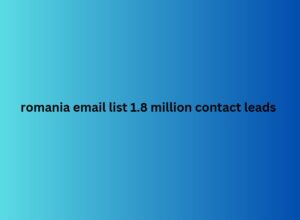Subscriptions as a revenue model? How to make the switch [5 steps]
Want to take control of your prompts and get more out of AI tools? Take the online course on December 19
It is a well-known fact: retaining an existing customer is often more cost-effective than attracting a new one. Loyal, profitable customers are therefore at the top of the priority list of many organizations. How can you optimize your organization’s customer retention approach?
Management consultant Peter Snoeckx recently published a book on this subject: ‘ The Retention Economy. Loyal customers as a competitive advantage ‘ (affiliate). Snoeckx discusses in detail the underlying business model that enables companies to bind customers to them. The model that is ideally suited for this is the subscription model.
Customer relationship
The subscription model is not about one-time transactions, but about building a long-term and valuable relationship with your customers.
An important common thread in every subscription is that it concerns an agreement for recurring goods or services. In addition to those goods or services, additional added value is often provided. An important starting point is also that the provider tries to optimize the relationship with the customer.
Example: HelloFresh
Take the example of a subscription to HelloFresh meal boxes. To use this, you enter into an agreement with HelloFresh for the delivery of the boxes to your home. In principle, these deliveries are recurring, unless you decide to terminate or pause your subscription. In addition to the ingredients in the box, HelloFresh also provides more added value, such as transport to your home address, inspiring recipes and sometimes free products. Because HelloFresh gets to know your preferences (recipes, delivery, etc.) better over time, they will be able to respond to this with personalized suggestions and thus optimize the relationship with you as a customer.
Subscriptions as a foundation for retention
Subscription providers know their customers and have an ongoing contractual and often emotional relationship with them. This allows them to work very specifically on their customer retention approach. Having subscriptions is of course no ‘guarantee’ for high customer retention, but subscriptions do provide a strong foundation for customer retention.
Some companies, such as HelloFresh or HubSpot, have been using the subscription model since the beginning of their existence. This allowed them to set up their entire operation based on this model from day 1. However, there are also organizations that only became charmed by the subscription revenue model later and switched to it.
Example: Adobe
A well-known example of a company that has made this switch is Adobe. Initially, their customers purchased individual software packages, such as Photoshop or Illustrator, with perpetual licenses for a one-time fee. After switching to the subscription model, Adobe offers a continuous stream of updates, support and services for a monthly or annual fee. The result: more stable revenue streams and a high level of customer retention.
Getting started with subscription model source: VectorMine / Shutterstock
How do you make the switch to a subscription model?
You don’t have to be Adobe to see the value of a romania email list 1.8 million contact leads subscription revenue model and make the switch. The book ‘The Retention Economy’ provides a practical step-by-step plan that helps you get started with subscriptions and the retention of your subscribers.
I will give you the 5 most important steps you need to take to successfully develop and launch subscriptions, but also to make them ‘land’ within your organization. These steps can help you transform your organization into a profitable ‘retention machine’.
Also read: Successfully launch a digital product in 6 steps
1. Understand your customer
Before you start developing a subscription, you will need to how to break the performance marketing growth ceiling build a good understanding of the customer and the needs that the customer has in relation to your products and/or services. To build this insight, you will work on, among other things:
Personas: Which personas are relevant for your customer ao lists segments?
Needs: What needs exist per persona? Are there significant differences?
Competing products or services: how does your potential customer currently fulfill his needs? To what extent is he satisfied with them?

